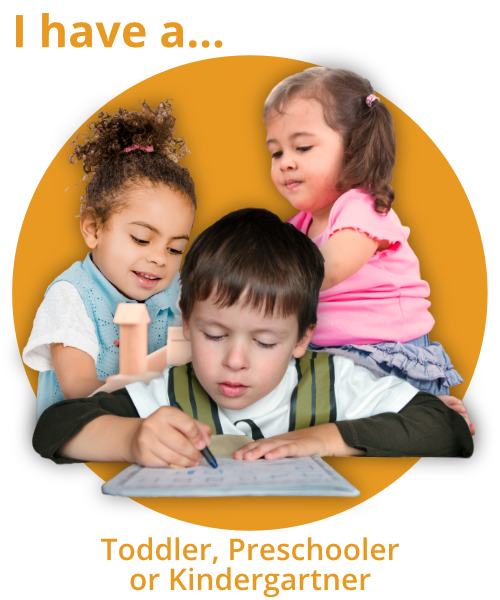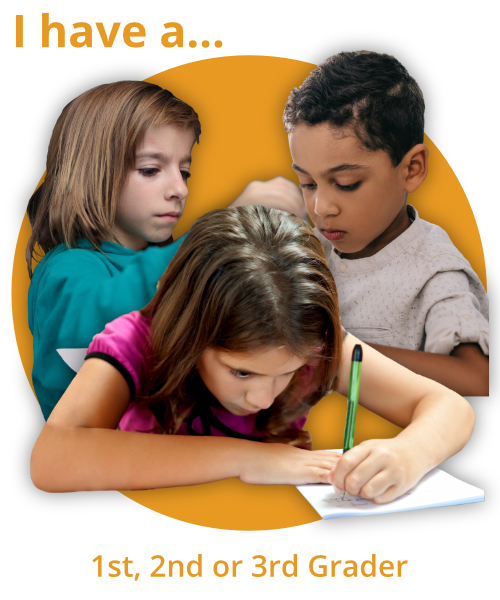Essential Montessori Materials For Homeschoolers (That Aren’t Printables!)
PODCASTS | SPOTIFY | GOOGLE PLAY | STITCHER
Are you ready to learn Montessori at home for ages 2.5-6? Maybe you’re wondering what to invest in or DIY first. This experienced Montessori homeschooler is going to lay out an easy starter plan for you! Get your Montessori ON, as I list out at least 2 favorite materials per category (Sensorial, Practical Life, Language, Math, and Cultural) and explain why you're going to want to purchase or DIY them for your home.
I get SO many questions about *which* Montessori materials are the most important. Homeschoolers want to know: What is it that I need if I am going to homeschool? What are the essentials?
It is so tempting to me to write back and let them know that there are no essentials. You do not need Montessori didactic materials to live a Montessori life.
Quality Montessori is not about the things, and whether a parent or school can afford them. Montessori is about the way of life--about how we talk and interact with children.
That said, materials are a beautiful addition to any prepared environment--and high quality ones are a sound investment.
There are five main categories of materials in any given Montessori environment. They are: Practical Life, Sensorial, Language, Math, and Cultural. I tend to lump Music in with the Sensorial area, Art in with Practical Life, and Science in with Cultural. Every Montessori teacher training program seems to have a slightly different way that they categorize—and that’s okay! But this is what I’m highlighting today and how I’m choosing to organize the information for you.
I think it’s GREAT to have some beautiful manipulative touchstones in your homeschool classroom—but we don’t need to own ALL of them. What is a sound investment for a large group of children might not be a sound investment for a single family. And at the end of the day, a home only has so much space!
With that in mind, here are some essentials from each category that I think are worthwhile investments if you want to feel connected to other Montessori schools/homeschools with regard to materials. The majority of them are the “iconic,” memorable items from Maria’s collection.
Practical LIfe
Tantalize your little one with the magic of water using these two essential practical life materials.
Pitcher
A small metal or ceramic creamer pitcher. Should be sized in proportion to the child and be easily grasped by their hands! Online, you might see two pitchers together, filled with either dry goods (lentils or oatmeal are an idea) or water, on a tray for a child to pour back and forth in between. This can be a messy endeavor--so limit your quantities and set yourself up for easy clean up. Also, any time you’re sharing this with a young toddler, be sure to supervise.
To present, model with exceptional, exceptional care; as though you are holding something precious, full of very hot liquid.
Scrubber
There are many kinds; a small sponge or tough cloth cut to size or a vegetable brush might be a good option. You can put the scrubber in a bowl which contains a small squeeze of dish soap and small amount of water.
To present, give your child a large area to scrub and engage their gross motor!
Sensorial
Of all the glorious but entirely optional sensorial materials, these two will make you feel like a “real” Montessori homeschooler.
Pink Tower
This is the thing that makes lots of homeschoolers feel like they are really doing Montessori, and so honestly, this is the main reason I would recommend it. It’s so iconic--it is THE Montessori symbol. It is precise in measurement, attractive to children, and so quintessentially Montessori.
I myself didn’t have a Pink Tower with my children until my youngest was a little old for the initial presentations--and that’s okay! We did the extensions with it...and it still attracts him now, and he’s 9!
Geometric Solids
Cone, sphere, cube, cylinder, rectangular prism, triangular prism, square-based pyramid, triangle-based pyramid, ellipsoid, ovoid. This one is hard to DIY, so I recommend buying it. You don’t have to get a fancy set, or even a real Montessori set! Any set will do.
It’s so wonderful to have a concrete representation of this material, and you can do many, many lessons and explorations with them. They work well in a mystery bag, too--if you don’t know what that is, google it! We talk a lot about them in Homeschool of the Redwoods.
Language
Learning to read and write doesn’t happen overnight. Your child needs to spend a lot of time in the above two areas developing fine motor skills. Phonemic awareness activities also wear the crown in this subject area. After that, however, you’re definitely going to want to have these beauties on hand!
Sandpaper Letters
Having tactile letters helps the formation of a letter (or how we write them) go directly from the fingertips into the brain. It’s a huge aid in the preparation of the hand for writing! It doesn’t necessarily have to be sandpaper, but do offer your child some sort of tactile letter experience. There are so many DIY guides on the internet!
Moveable Alphabet
This is a set of letters, with color-coded vowels and consonants. The vowels are traditionally blue and the consonants pink—but you can choose whatever colors you'd like. This allows the child to build words and even practice decoding them before they might otherwise be able to write or read. You don't need this material until the child has had a lot of experience with phonemic awareness.
Mathematics
These are not materials you need for your toddler; think closer to 3.5 or 4. There is no need to rush the child into academic skills! When your child is ready to go beyond easy counting activites, these two materials will come in very handy.
Colored Beads
This is an easy DIY or you could purchase a big decanomial box of them. These are useful for many, many years, and will be useful even if your child goes to traditional school for elementary.
Golden Beads
These are traditionally colored gold, and are considered precious in the Montessori community. They are typically the child's first real exposure to mathematical functions, and allow children to add, subtract, multiply and divide 4 digit numbers. They are essentially a base 10 material; so if you already have a set of base 10 manipulatives, you might use those—but if not, I'd highly recommend you buy golden beads. Make sure you get a sufficient quantity! Some families even make theirs.
Cultural
Learning about the world doesn’t have to be complicated. These three Montessori materials have massive learning potential! Don’t overlook them.
Globe
Having a globe is essential because it allows children to understand that the Earth is a sphere! It helps them to see: even though we walk on the earth and it seems like it is kind of flat, in reality, it's a spherical mass that floats out in space!
There are specific globes in Montessori classrooms; a tactile one where the landmasses are covered with sand, and globe with each continent painted in a different color. The tactile one does not last a super long time; and you don't necessarily need a “Montessori” globe. Any globe with a detailed map is great. I find the raised relief globes to be especially lovely if you can find one!
Plants
This might seem silly, but plants are a way for us to connect children to the life cycle of plants, the change of the seasons, and even basic botany. The child can care for it while also learning more about the natural world. If there is any space at all in your home for a plant, I would highly recommend it.
Non-Fiction Books / Photos / Realistic Miniature Models
When my children were little, I did sometimes use the highly realistic plastic animals. They are a sweet addition! However, it is also smart to be wise about the introduction of more plastic into our already overburdened ecosystem. If you want to use them, you might consider looking for gently used ones—or just limiting how many you bring into your home.
It's also wonderful to use highly realistic photos—on cards, or ones you've cut from magazines, or ones you see in non-fiction books—to introduce information about the world to your child. These can be the foundation of great conversations with your children.
You might also consider a zoo to really give a concrete experience; with the caveat that there is a discussion to be had about the roll of zoos in the conservation of animals, and later, the ways in which zoos sometimes fail to take care of animals. Yes, these things can be sad. But connecting your child in meaningful way to nature allows them to feel deeply about it, and allows them to ask big questions, share concerns, and think about ways to make meaningful change.
If you would like a more comprehensive list of Montessori materials and their use, or things I think you should DIY or invest in, you can join us for Homeschool of the Redwoods, where we dive deep into the Montessori curriculum.
Gratitude for Having Less
Today, I am grateful for not being able to afford all the Montessori materials of the classroom environment. That's right! I'm grateful for the scrappy, innovative way that my children and I have worked together to make our homeschool life great on our own terms. It's been great for our brains and for our relationship.
No matter where you are in your journey, whether you have funds for materials or not, remember that there is nothing that is essential except your relationship with your child. What matters is your personal investment, your energy, and your love. ❤️


